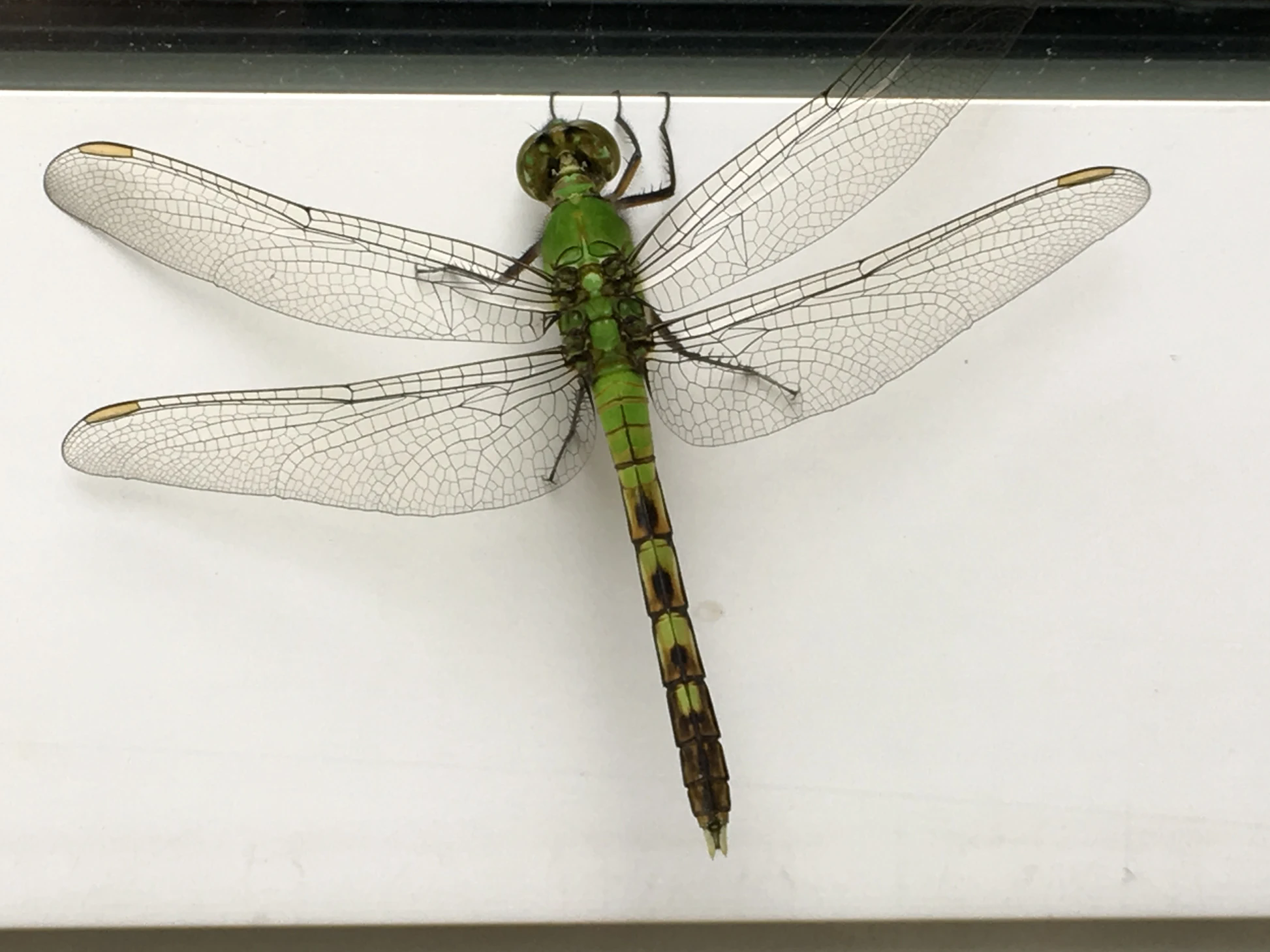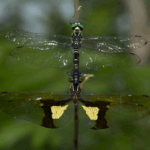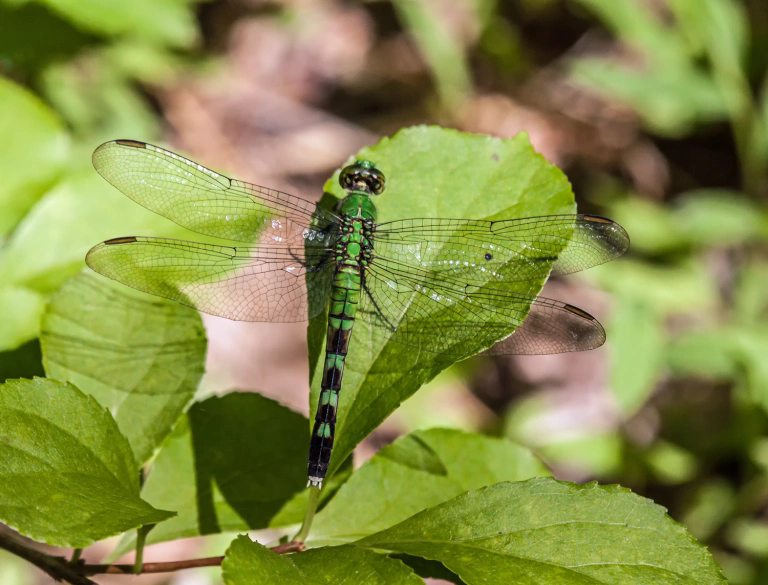
Description
Size:36-48 mm.
Erythemis simplicicollis, the eastern pondhawk, also known as the common pondhawk, is a dragonfly of the family Libellulidae, native to the eastern two-thirds of the United States and southern Ontario and Quebec, Canada. It is a dragonfly of ponds and still waters. The species is distinguished in that the female is bright green with a banded abdomen and the mature male has a blue abdomen with a green face and green and blue thorax.
Nymphs of the eastern pondhawk are identifiable by their green eyes. When they leave the water and moult for the final time, the emerging immature adult is dull olive green but over the course of a few hours, the abdomen becomes bright green, there is dark brown banding and the heads take on a metallic green sheen. Over the course of their adult lives the green of the male is gradually transformed into a duller shade of blue and finally a powdery bluish-grey. The wings are distinctively veined and have dark margins near the apices.[2] The length of this dragonfly is 36 to 48 mm (1.4 to 1.9 in).
The eastern pondhawk is a common and well-known large dragonfly of ponds and other standing water. It is in the large family of dragonflies called skimmers. Females and young males are green with squarish black abdomen spots. Older males have a blue abdomen and green face and thorax. This species is one of the first to be seen in spring and last to be seen in fall. Ponds or other standing water is the preferred habitat. Sparring males engage in fascinating aerial maneuvers.
eastern pondhawk life cycle
They only live as adults for perhaps two weeks! What a short, brilliant lifespan to fly around. They eat mosquitoes – take good care of these!
A dragonfly has a life span of more than a year, but very little of that life is actually as an adult dragonfly. There are three stages of the dragonfly life cycle, the egg, the nymph, and the adult dragonfly. Most of the dragonfly life cycle is lived out in the nymph stage and you don’t see them at all unless you are swimming underwater in a lake or pond with your eyes opened, of course.
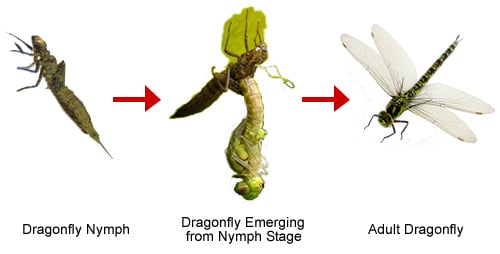
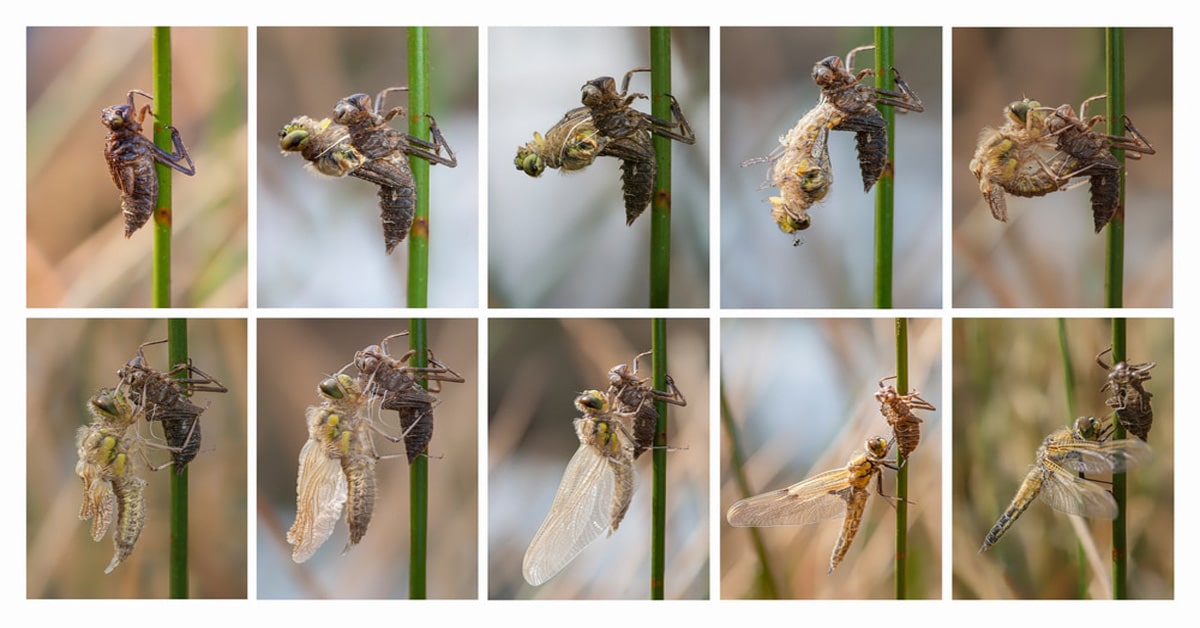
Habitat & Distribution
The eastern pondhawk is native to parts of North America and Central America. Its range includes the provinces of Ontario and Quebec in Canada, much of the eastern United States, the Bahamas, the West Indies, Mexico and Central America as far south as Costa Rica. It is a widespread and abundant species and the International Union for Conservation of Nature has assessed its conservation status as being of “least concern”.
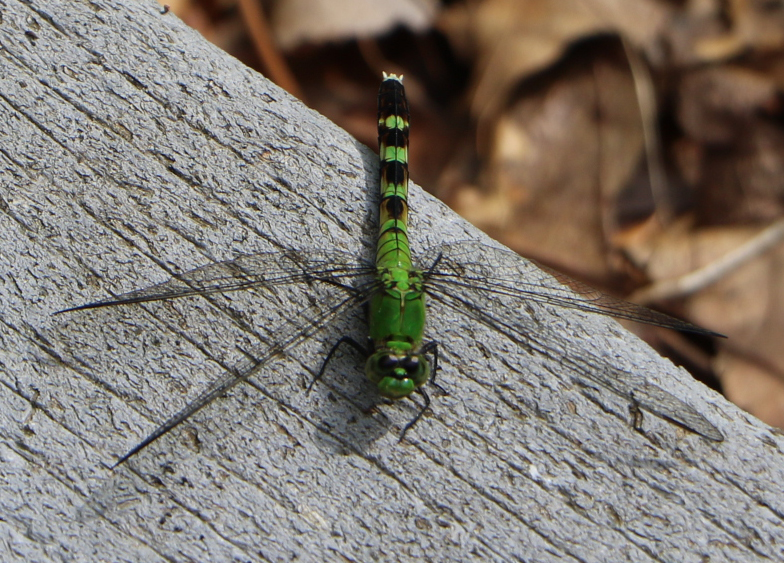
The eastern pondhawk (Erythemis simplicicollis) is a large dragonfly that prefers ponds, lakes, swamps, and slower parts of rivers and creeks with open shores that are sunny and have floating plants. They can also be found in marshes and ditches. The eastern pondhawk is native to the eastern two-thirds of the United States and southern Ontario and Quebec, Canada, and is one of the first dragonflies to appear in the spring and the last to be seen in the fall.
Ponds or other standing water is the preferred habitat. Sparring males engage in fascinating aerial maneuvers. Learn more about the eastern pondhawk and other dragonflies (suborder Anisoptera) in their group entry.
Introduction
These dragonflies are arguably the most aggressive of the dragonflies that live in the Mississippi National River and Recreation Area. Fortunately, they are aggressive to only other insects and don’t bother people.
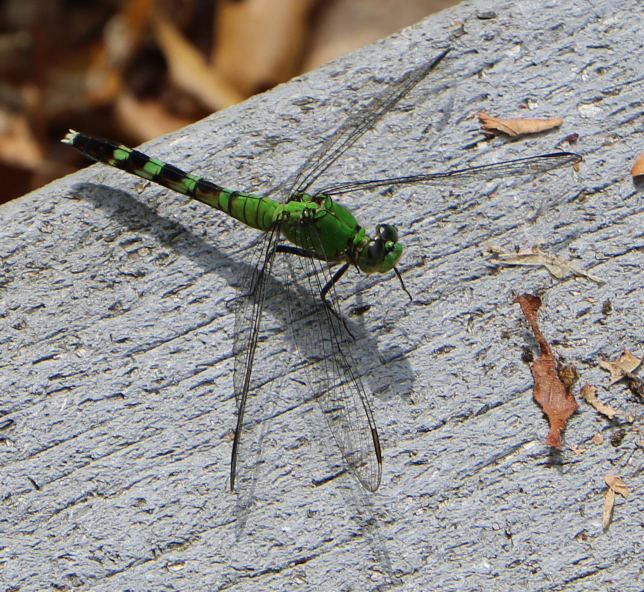
Often these dragonflies will dart out from their perches, grab insect prey, and then fly to some convenient spot to eat it. These dragonflies are equiped with long leg spines that form an effective “basket” in which to hold their prey securely. They will prey on very large insects, including other dragonflies their same size!
Will they bite people? Eastern pondhawks, like other dragonflies, are not aggressive towards people and an observer shouldn’t worry about being bitten by these powerful insect predators. However, any dragonfly will bite when being handled, including the eastern pondhawk. Most dragonflies are too small though to actually penetrate the human skin, but some of the larger ones could draw blood if given enough time and some can pinch surprisingly hard!
Pondhawks attack their insect prey with similar agility demonstrated in their avian namesake. They are very good predators and can take down insects as large as themselves. They will even eat members of their own species. The males and females of this species differ in color. Adult males are a powdery blue with a yellow-tipped abdomen, while females are bright green with some dark brown/black spots on the abdomen. Young males are also green, like females, with rings on the abdomen, but they will change color as they mature.
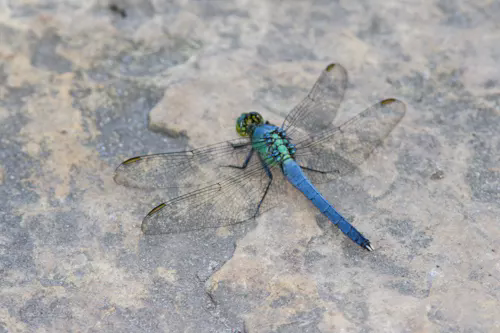
Males aggressively defend their territories, especially at or near the water’s edge. They constantly patrol their airspace, occasionally taking rest on the ground or on floating trash or tree branches. Females drop their fertilized eggs into the water. They choose warmer, still waters as there are fewer potential predators there that might eat hatching young. There, the larvae (naiads) grow by feeding on other aquatic insects until they mature enough to crawl on land and molt into their adult form.
Eastern Pondhawk
Common Name: Eastern Pondhawk.
Scientific Name: Erythemis Simplicicollis.
What to look for? Look for bright green or pale blue dragonfly. The male and female Eastern Pondhawks differ in color. Adult males are pale or powdery blue over entire abdomen and thorax with a yellow-tipped abdomen. Their eyes and face are green. Females are an eye-popping bright green and are banded with some black markings or spots on the abdomen. Their eyes are brown. The wings the Eastern Pondhawk are translucent except for the vein and flexion lines (look like a clear stained glass window). These dragonflies are equipped with long leg spines that form an effective “basket” in which to hold their captured prey securely.
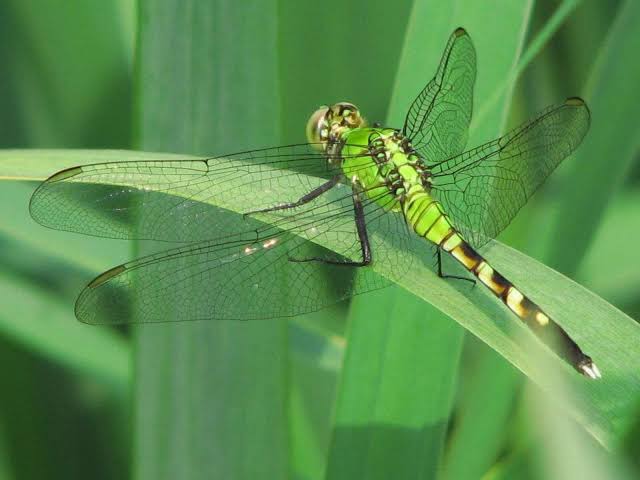
Where can they be found at Carillon Stonegate Pond? The Eastern Pondhawk will be found here from May to September. Look for them around the water’s edge. They will often perch on on the ground, flat rocks, logs or other objects surrounding our ponds and sometimes on our homes.
How big are they? The Eastern Pondhawk averages approximately one and two-thirds inches in length. And their wingspan is approximately one and one-fourth of an inch.
What are their flight patterns? The Eastern Pondhawk is athletic and swift-flying, but is not a long distance flier.
How else do they behave? Eastern Pondhawks aggressively defend their territory, which usually encompasses about five square yards of algae or other floating plants. Males display a unique “leap frogging” behavior when defending territories: when chasing another male, they will suddenly move under the male in front and repeat this swapping each of their positions often. Eastern Pondhawks have similar agility and ability as demonstrated by their avian namesake (i.e., hawk) when attacking their insect prey.
What’s for dinner? Other flying insects! Dragonflies are carnivores! The Eastern Pondhawk is an adept predator of other flying insects, including damselflies and butterflies. They commonly take prey as large as themselves. They hunt from the ground or from low perches, darting out to grab insect prey, and then flying to some convenient spot to enjoy dinner.
Where do they take up residence? The Eastern Pondhawk is found throughout the eastern United States and southern portions of Canada. They tend to prefer open pond and lake shores that are well exposed to sunlight and that support floating plants. The Eastern Pondhawk is one of our most abundant and widespread dragonflies in Illinois.
When and where do they breed and nest? At the start of the breeding season, male Eastern Pondhawks establish territories, which females visit to mate and lay eggs. Females lay up to 900 eggs and drop their fertilized eggs into the water. They choose calm, warmer waters as there are fewer potential predators there that might eat hatching young. Then, the larvae (naiads) grow by feeding on other aquatic insects until they mature. The resulting larvae remain under water until ready to emerge and transform into adults. Then, they crawl onto land and molt into their adult form.
Where do they migrate? They do not migrate.
Do they make any interesting sounds? No.
Interesting Facts About the Eastern Pondhawk:
- Eastern Pondhawks are in the Skimmer family (Libellulidae) – a large group of common, often-flashy, mostly-pond-dwelling dragonflies.
- Eastern Pondhawks are also known regionally by Common Pondhawk, Green Dragon, Green Jacket Skimmer, and Green Jacket.
- In defending their territories, male Eastern Pondhawks respond to visual cues (i.e., the color of the “intruder”) not its flight pattern or behavior.
- Dragonflies were some of the first winged insects to evolve, some 300 million years ago and had wingspans of up to two feet.
- There are more than 5,000 known species of dragonflies, all of which (along with damselflies) belong to the order Odonata, which means “toothed one” in Greek and refers to the dragonfly’s serrated teeth.
- In their larval stage, which can last up to two years, dragonflies are aquatic and eat just about anything—tadpoles, mosquitoes, fish, other insect larvae and even each other.
- Nearly all of the dragonfly’s head is eye, so they have incredible vision that encompasses almost every angle except right behind them.

